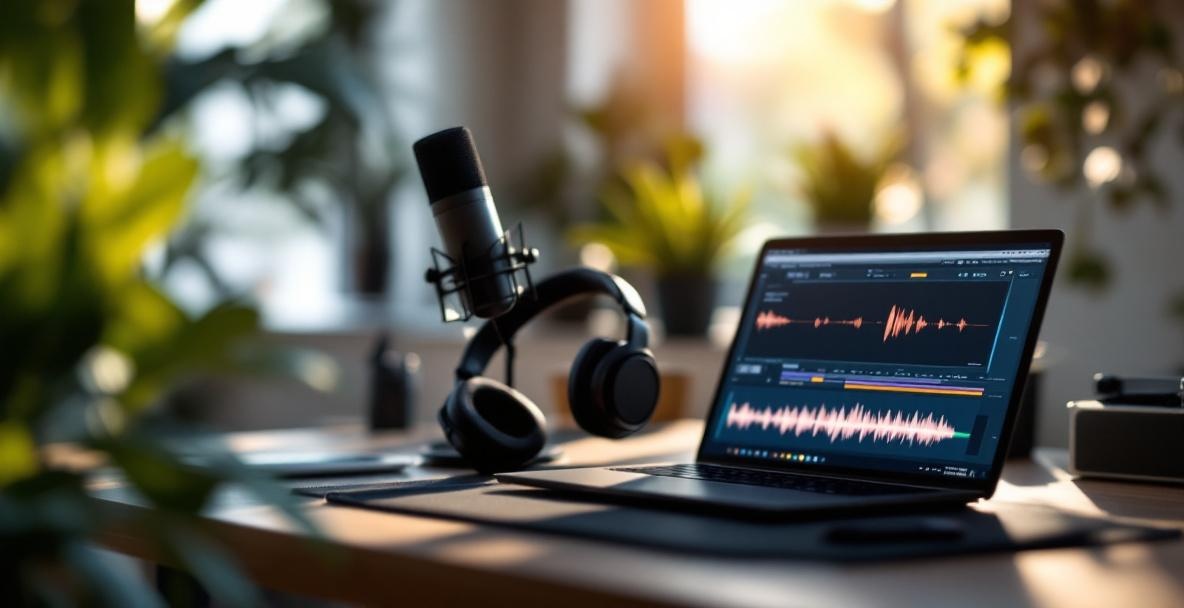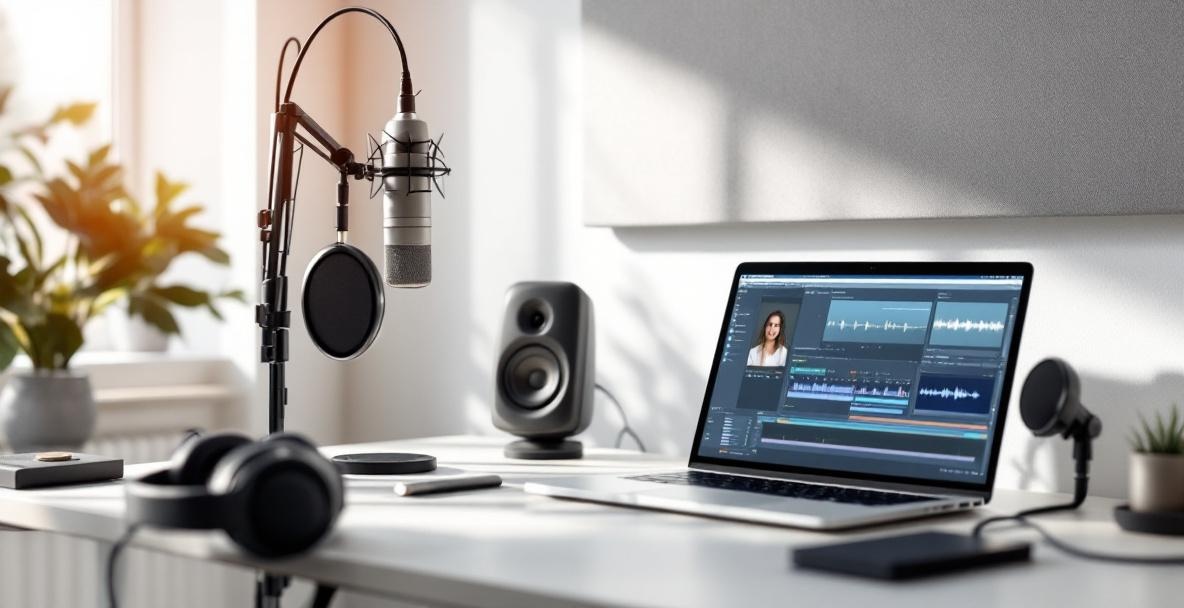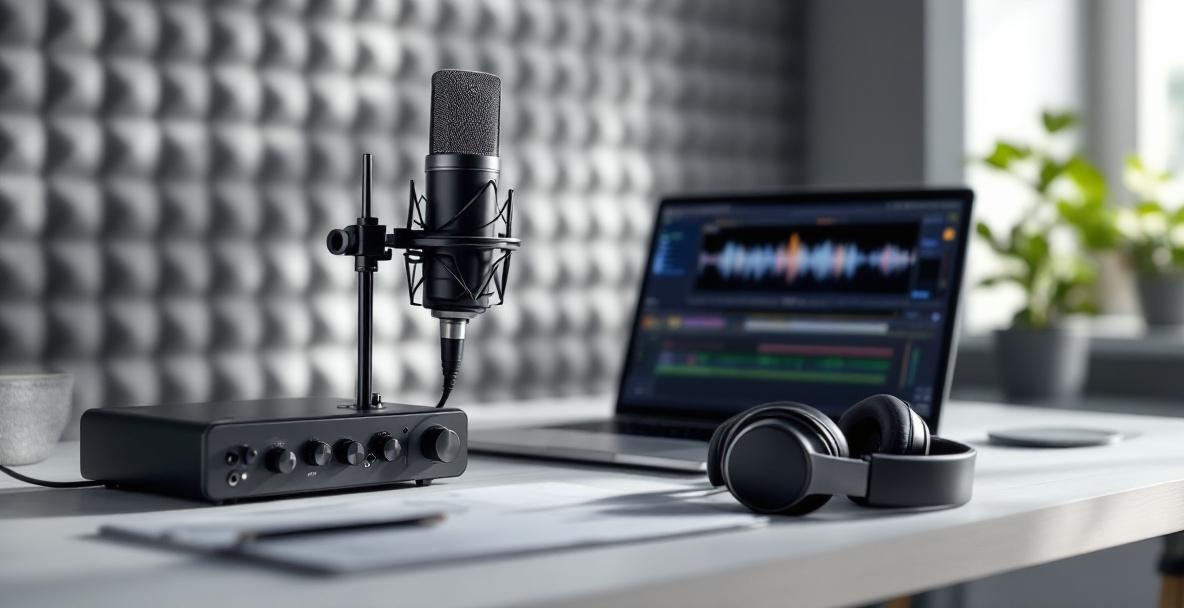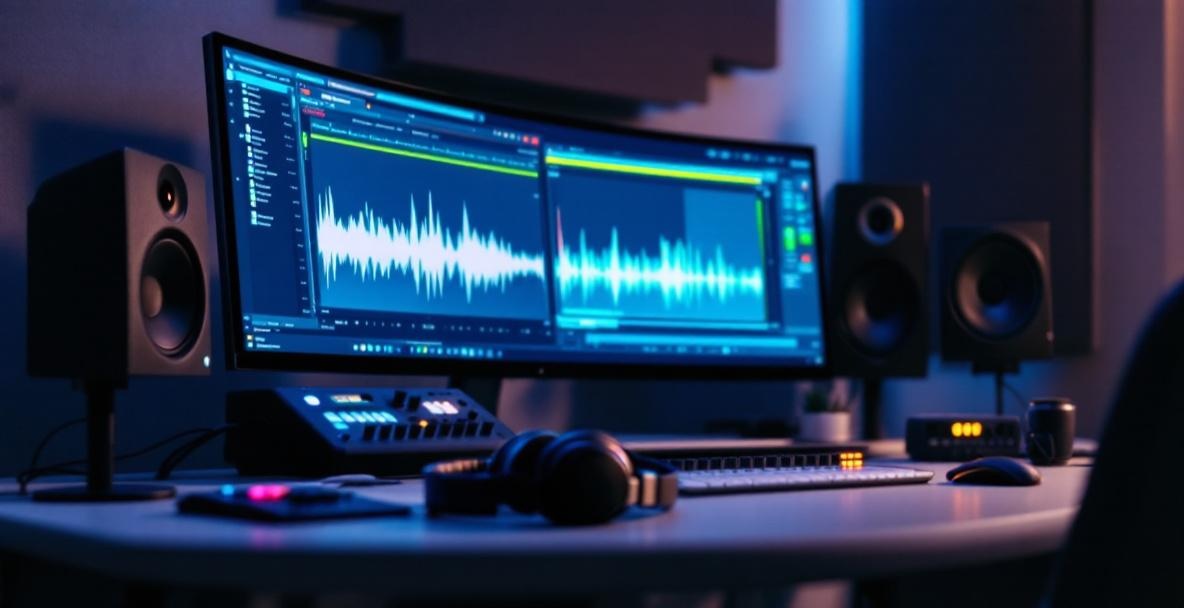When you press record, your podcast can grab attention from the very first second or lose listeners right away. The secret is in how you edit your sound. At Castee, we know that professional editing that truly cares about sound transforms a decent show into one that feels special. A well-edited episode keeps people interested and builds trust, ensuring that every moment counts.
Why Good Podcast Editing Matters

The Podcast Scene Today
Podcasting has grown into a massive stage with over 2 million shows fighting for ears. When so many options exist, having crystal-clear audio quality is non-negotiable. People make snap judgments based on how things sound, and good editing is like showing that you value every listener's time. Recent research on podcast listener behavior reveals that shows with tidy, well-balanced audio keep audiences coming back. At Castee, we see this every day and know that good sound is a game-changer.
Make Your First 30 Seconds Count
Your very first half-minute sets the tone for the entire episode. If the audio comes off as cluttered, with background noise or uneven levels, listeners will likely move on, no matter how great the story is. Think of editing as that firm handshake and genuine smile that build trust before a conversation even begins. When you put in the work to create a smooth and inviting introduction, your audience feels that you truly respect them, and they stay tuned for more.
Getting Set Up: The Tools and Software You Need

Finding the Right Editing Software
Picking the right software lays the groundwork for every episode you create. Beginners often start with tools like Audacity, GarageBand, or Hindenburg Journalist because they make basic cuts and add effects without a complicated setup. These programs let you export files in formats that work great for podcasts, keeping the editing process simple and direct.
For podcasters ready to explore further, programs such as Adobe Audition, Logic Pro, or Reaper open up more advanced features like noise reduction, multitrack editing, and detailed audio processing. These options might require extra time to learn, but they give you greater creative control over your final sound. In the end, it is less about the tool itself and more about how you use it to shape an episode that feels engaging and polished.
Remember, whether you choose a free program or invest in a professional tool, what really counts is how you use the software to create a listening experience that speaks to your audience.
Gear You Can't Do Without
The right gear can seriously boost your editing game. Start with a good pair of headphones because they reveal details that regular speakers might miss. Models like the Audio-Technica ATH-M50x or Sony MDR-7506 help you notice every little nuance so you can perfect your mix. When you edit, you need to hear every subtle shift in your audio exactly as your audience will.
Also, a reliable computer makes a big difference. You do not need the top-of-the-line model, but one with at least 8GB of RAM and a modern multi-core processor will keep your sessions running smoothly, even with lots of tracks and effects. Finally, extra storage for your work, such as an external SSD for current projects and larger backup drives for finished episodes, not only protects your work but keeps everything running without a hitch. With the right equipment in place, you set yourself up to create a podcast that sounds as good as it feels.
Simple Tricks to Boost Your Audio

How to Cut Out Unwanted Noise
Background noise-like faint hums, distant fans, or echoes-can sap the energy from your podcast. The best approach is to start with a proper recording setup, but even then, editing tools can work wonders. Today, many editors capture a noise profile from a quiet segment and then use it to reduce unwanted sounds throughout the track. This simple trick cleans up your recording and helps your voice come through clearly.
If extra care is needed, combining a high-pass filter to cut low rumbles with a noise gate to handle silent gaps can do the trick. It is important to experiment with different settings until you achieve a sound that feels natural without any strange artifacts. Eventually, you will find that a little adjustment here and there is enough to remove distractions without hurting your voice’s natural tone.
Take your time testing various approaches and listen back to your edits. This careful process will help you remove annoyances while maintaining the warmth of your original recording.
Getting the Levels Just Right
Ensuring your episodes have balanced volume is key to keeping your audience comfortable. Start by normalizing your tracks so they all match a similar level, and then use compression to tame the loud highs and soft lows. This means your listeners won’t have to keep reaching for their volume controls. Equalization also has its role; applying a high-pass filter around 80 to 100 Hz gets rid of any low-end rumble, while a boost in the 3 to 5 kHz range adds clarity to your speech. If your audio sounds a bit muddy, reducing frequencies around 200 to 300 Hz can help, and trimming any narrow problematic bands makes a big difference. With balanced volume and well-tuned EQ, your words shine naturally and clearly.
Sprinkle in Music and Sound Effects
Adding well-chosen music and sound effects at the right moments can lift your episode from simple conversation to something memorable. A catchy intro or a thoughtful outro builds your unique identity, and a soft musical background during explanations can set the right mood. When you choose music, always ensure you have the proper licensing by checking resources like Epidemic Sound, Artlist, or Soundstripe. It is important to pick tracks that complement your voice rather than overpower it. Occasional sound effects, used in moderation, can signal transitions or add a touch of humor without distracting from your message. When mixed correctly, these elements underscore your narrative and create a distinctive audio experience.
Streamline Your Editing Workflow

Organize Your Files and Keep Your Timeline Clear
A smooth editing process starts with proper organization. Begin by setting up folders for raw recordings, edited files, music, and final exports. Using a clear naming system that includes episode numbers, dates, and version details will save you time when searching for files later. In your editing software, work from a template that includes your preferred track layout, common effects, and color coding. Such a workflow makes it easier to dive into editing with a clear mind and less frustration.
Before you start cutting away, place markers in your timeline at key moments-whether it is a segment change or a spot that needs special attention. These markers act as signposts during long editing sessions and allow you to quickly find shifts or transitions. Spending a few extra minutes upfront to organize your files means you can edit more confidently and efficiently while keeping your focus on the creative side of things.
Mastering the Art of Cutting and Splicing
Transforming raw chatter into a story that flows naturally takes practice and care. Start by removing parts that stray off topic and reordering your content so the conversation flows smoothly. It is important to trim sections that do not add value while preserving the natural rhythm of speech. Remember, slight pauses and gentle breaths lend authenticity and warmth to your show.
When linking together different clips, use crossfades to smooth out transitions instead of letting hard cuts distract your listeners. Short crossfades can hide minor clicks, while longer ones help merge bigger segments. It is a good idea to listen to your edits at different speeds; sometimes a quick playback will reveal issues that slower listening might miss. This careful approach ensures every cut and splice leaves your podcast sounding like one continuous conversation with smooth transitions throughout.
Keep It Natural – Avoid Over-Editing Your Podcast
It can be tempting to polish every little detail until nothing is left but an overly perfect recording. However, a few natural pauses or the occasional hesitation can add personality and remind your audience they are listening to a real person. Aim to fix major issues without erasing the natural flow of conversation. For example, you might decide to leave in spurts of silence that last less than three seconds if they add to the relaxed, genuine feel of the chat.
Getting feedback from friends or colleagues helps you decide what sounds best. Compare a version with heavy editing to one that retains a bit of the original spontaneity. Over time, you will learn which tweaks truly polish your work and which ones strip away that human touch. Strive for a balance where your podcast feels both refined and natural, giving your audience an authentic listening experience.
Wrapping It All Up
Quick Recap and Final Takeaways
Editing your podcast is a blend of technical skill and personal touch. The tips above-from cutting unwanted noise and setting the right levels to organizing your files and blending in music-form a toolkit that can elevate your episodes. Great editing should feel invisible, letting listeners enjoy a smooth conversation without noticing each tweak.
As you develop an editing routine, aim for consistency from episode to episode. A signature sound builds trust and makes your show easily recognizable. Consistent editing practices become a core part of your podcast’s identity, ensuring your audience always knows what to expect.
What Comes Next – Keep Practicing
Podcast editing is a craft honed over time. Each episode offers a chance to try new techniques, whether it is tightening the content or finding a more natural rhythm in your speech. Listen to other podcasts, see what works for you, and continually adjust your process until your unique voice shines through.
Consider making your own editing checklist that covers important points from matching loudness levels to keeping a natural pace. This routine will help you maintain high standards as your skills grow. Ready to take your podcast to the next level with professional-quality audio? Visit Castee today to discover how our end-to-end podcast marketing platform can help you not only perfect your sound but also grow your audience and build a thriving community around your content. With our specialized tools for podcast SEO, audience analytics, and brand development, you'll transform your newly polished audio into a powerful asset for connection and growth.
Leave a Reply